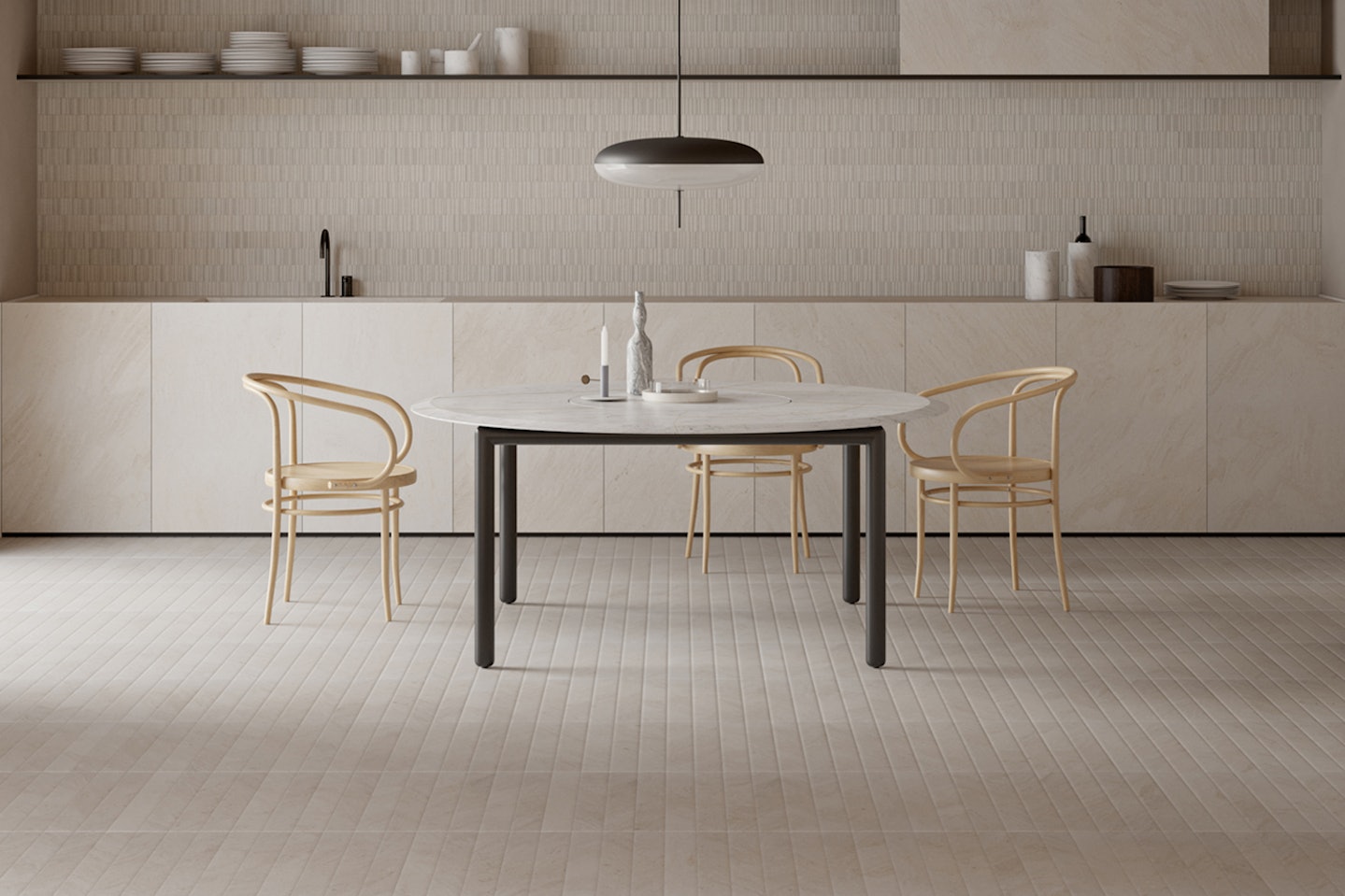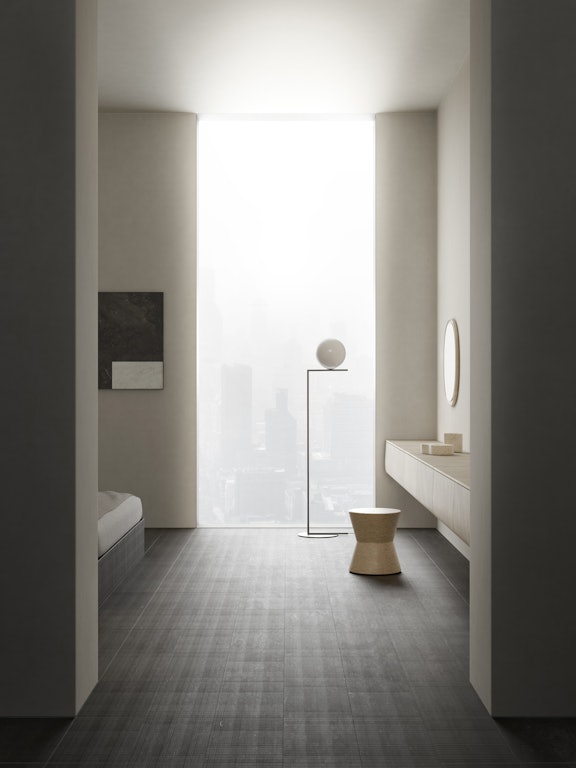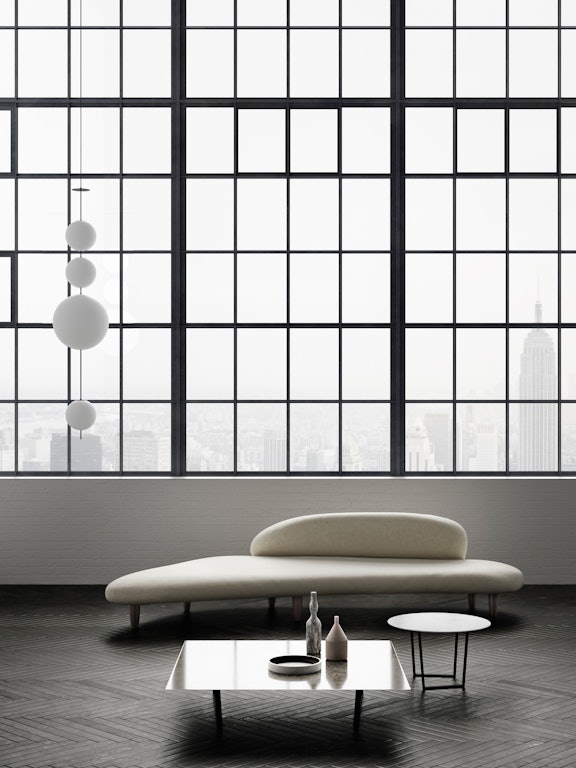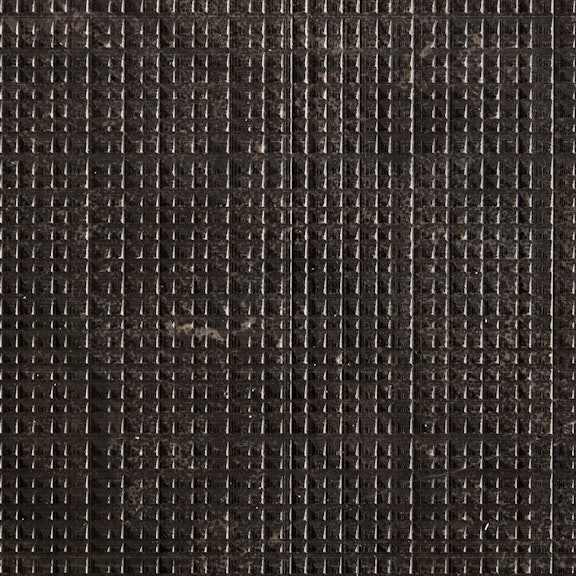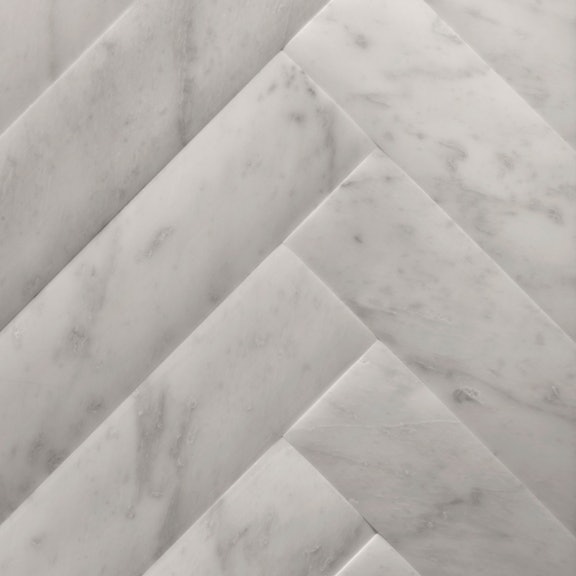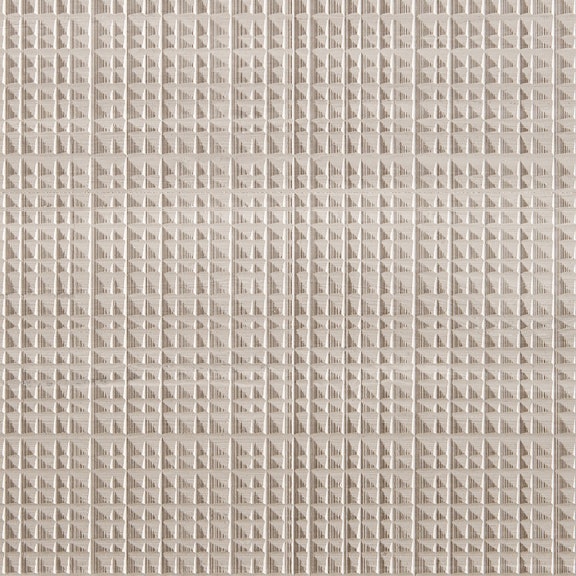Versatility in marble laying
03.2022
Let's discover together the versatility in the laying of marble, a very broad topic both technically and artistically
Marble and its great versatility
It might be easy to say marble laying, but it is a very broad subject, whether you look at it from a technical point of view or from a more creative perspective. Marble laying is in fact a very versatile and eclectic reality, capable of surprising even the most critical eye.
There are many ways in which marble can be laid and there are many examples that we can admire all over the world, in a wide range of disciplines, from architecture to design. So let’s take a look at two of our creations and then move on to Milan, to the Palazzo d’Arte, home of the Triennale.
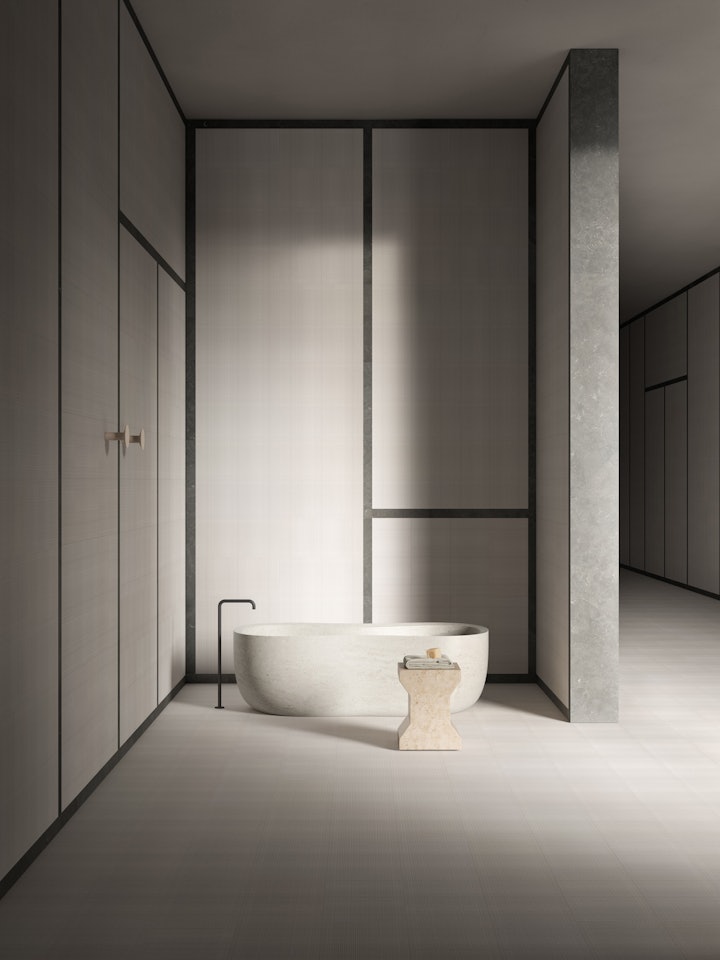
Wood-effect marble: Stone Parquet and Stone Tatami
The laying of our products, like every aspect of their life, is of primary importance to us. We approach this delicate phase with care, attention, and an innovative eye, and our Stone Parquet and Stone Tatami are an example of this. Two creations that already have the solution in their name and that outline creativity.
Both created in collaboration with Piero Lissoni, Stone Parquet uses marble to recreate the effect of the classic laying of wooden parquet, while Stone Tatami recreates the effect of walls and coverings typical of ancient Japanese imperial palaces (a clear manifestation of the Salvatori-Lissoni duo’s love for oriental culture, like Lost Stones).
Stone Parquet exists in both standard parquet versions, that is to say with slats of different lengths and widths for end-to-end laying and with strips for herringbone laying. It is also available in four options: Bianco Carrara, Crema d’Orcia, Imperiale and Pietra d’Avola. Stone Tatami, on the other hand, is available in Bianco Carrara, Crema d’Orcia, Pietra d’Avola and Silk Georgette®, and can be laid either with a contrasting polished edge or just with the textured finish. And if you notice cracks and imperfections in the ridges of the finish, don’t worry: these are not production defects at all, but our precise desire to give the work additional character. Because, as we all know, perfect and impersonal things do not capture our heart, which instead seeks uniqueness.
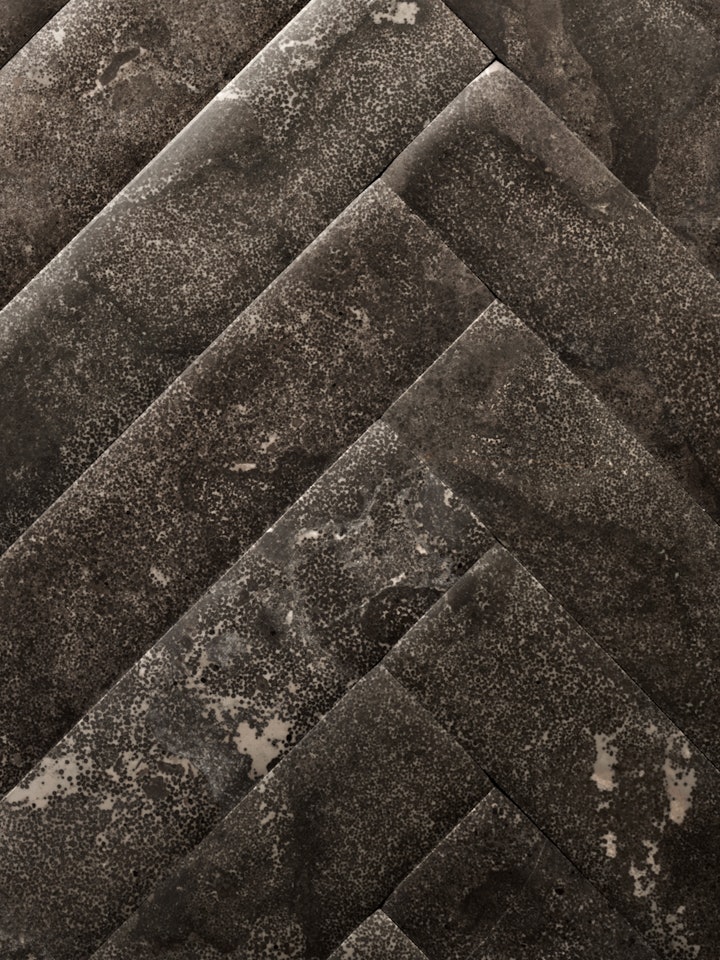
The creative innovations of a traditionalist: Giovanni Muzio's marble at Palazzo d'Arte
If Parquet and Tatami are, as we have just seen, the brainchild of the Salvatori-Lissoni duo, the Palazzo d’Arte, known to most as the home of the Milan Triennale, was created thanks to one of the most important names in early 20th-century Italian architecture: Giovanni Muzio. It was in 1931 that the Bernocchi Foundation commissioned Muzio, who a few years earlier had been one of the founders of the Novecento art movement, to design an ambitious project for a building that would officially rise in Parco Sempione in 1933, and which had been requested to be the new home of the Triennale.
One of the founders of the Novecento art movement, a rather traditional line of artistic thought as opposed to the avant-garde movements of those years, Muzio nevertheless experimented quite a bit with the Palazzo dell’Arte, using and laying marble in relation to a wide variety of elements: in the ground floor vestibule, on the first floor alternating with linoleum, and on the terrace, the protagonist, this time in the green cipollino variant.
For the exterior, Muzio’s choice also fell on the use of marble and its malleability and ability to be combined with countless materials. By juxtaposing the stone with the wall behind, made of clinker bricks and red granite from Baveno, Muzio created something that still continues to enchant almost a century later.
